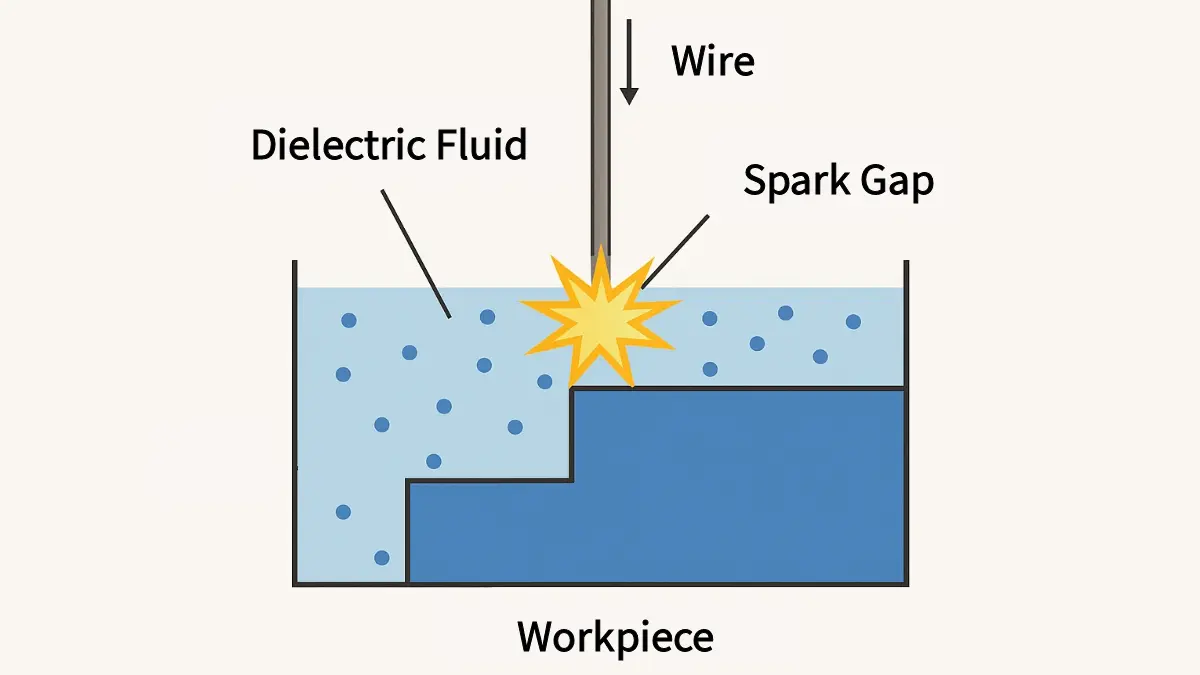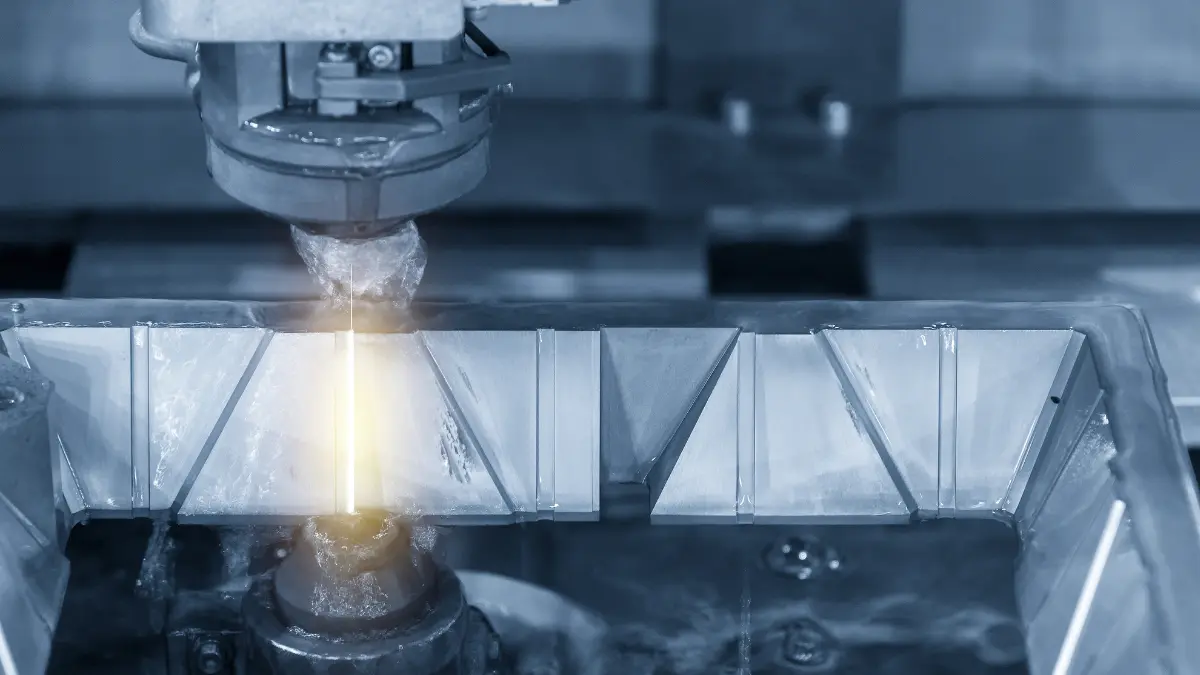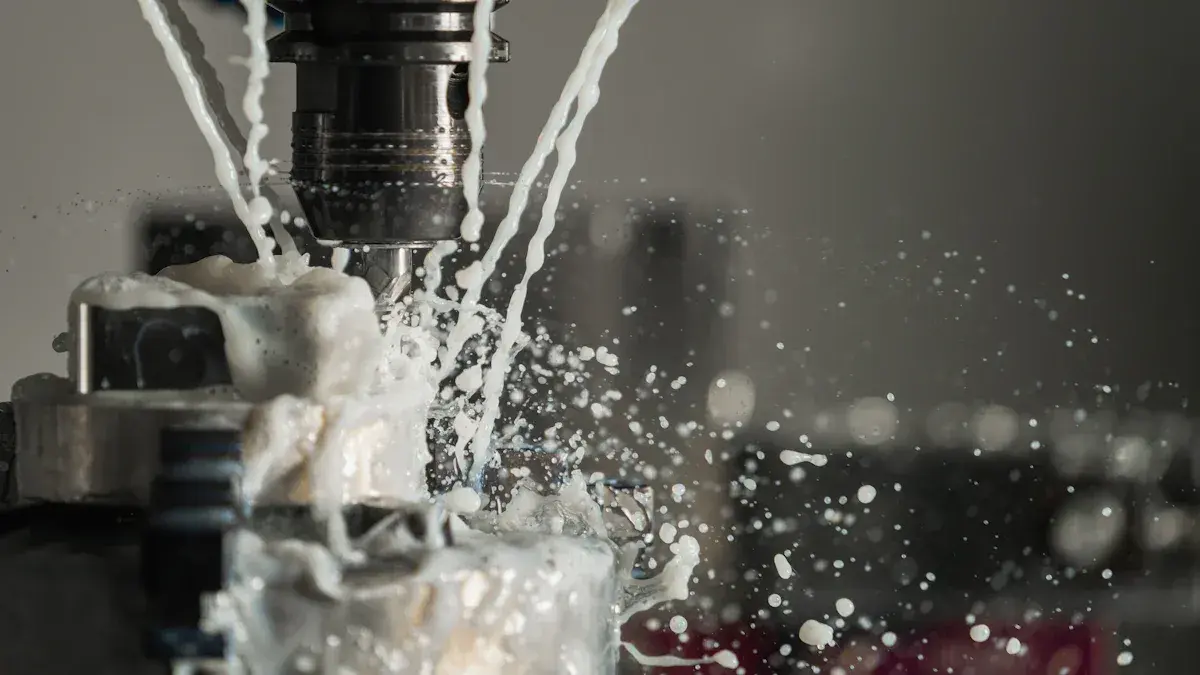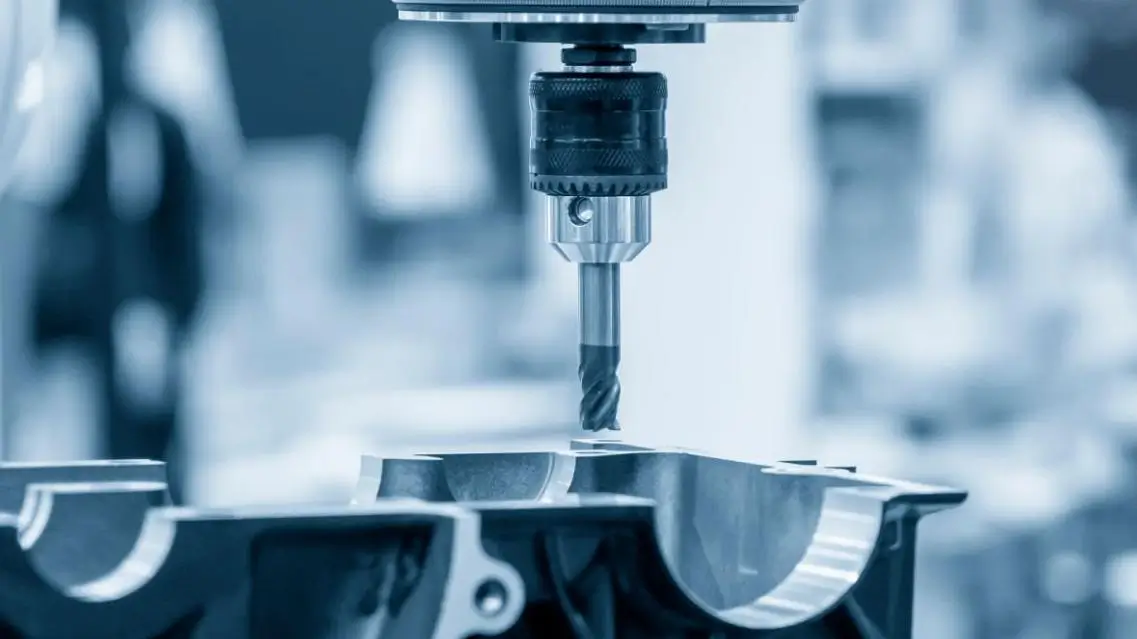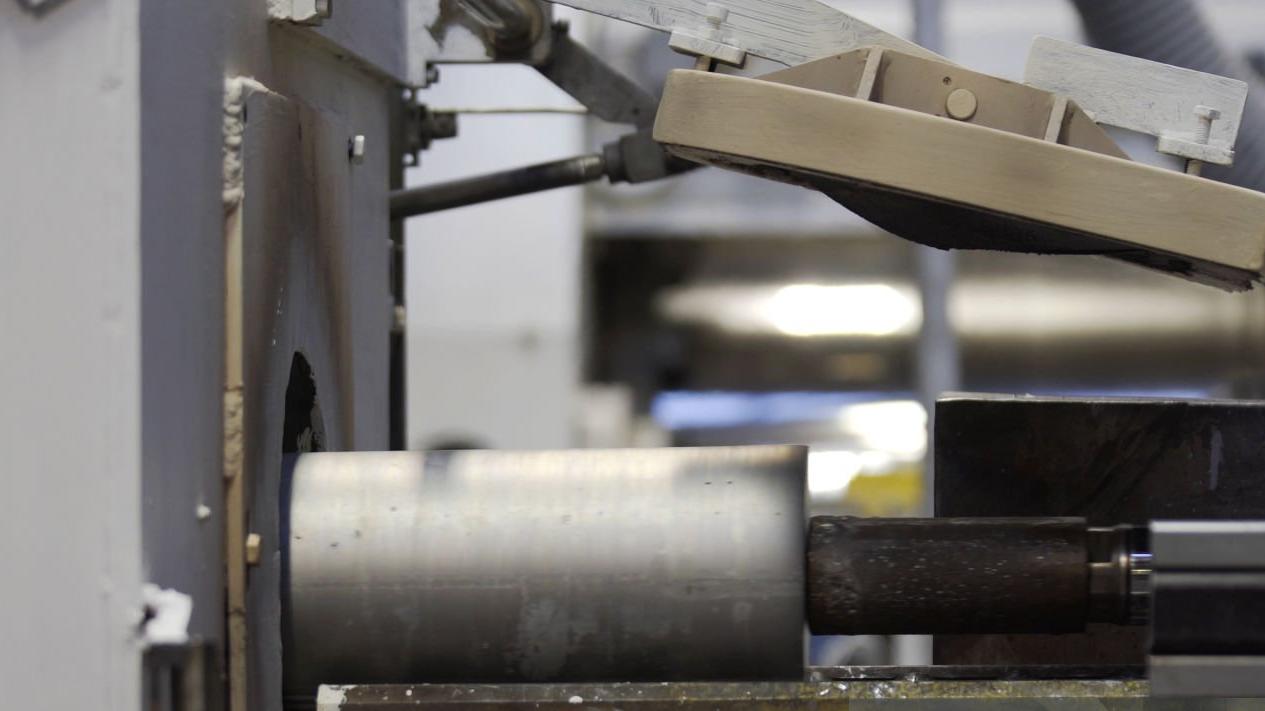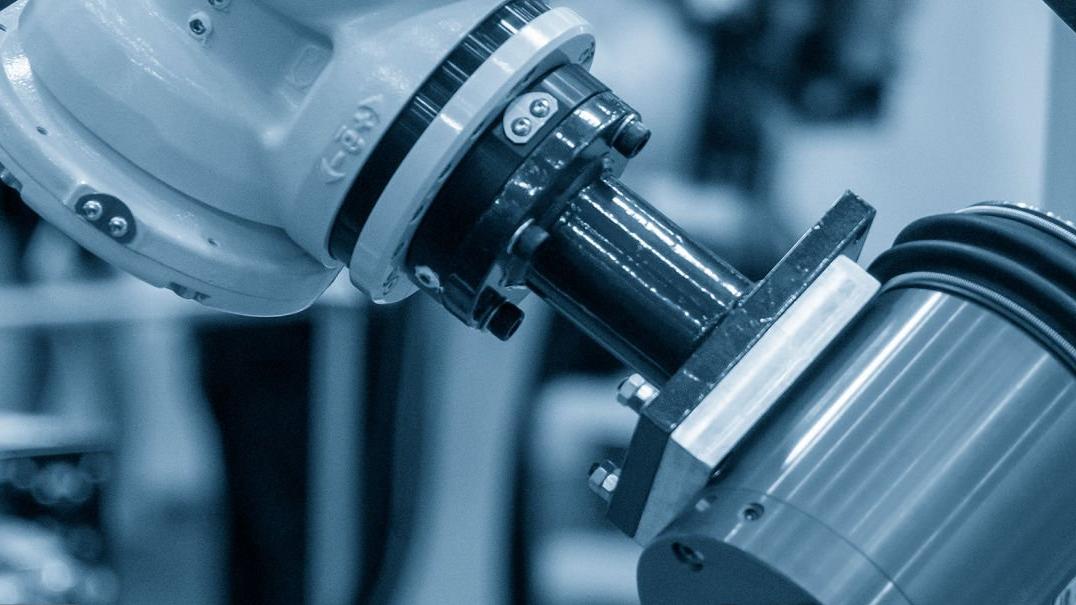Introduction to Wire EDM in CNC Machining
Wire Electrical Discharge Machining (WEDM), or wire-cut EDM, is an exceptionally advanced and precise CNC machining method. Many industries widely use it in modern manufacturing. Manufacturers widely use it to produce complex and high-precision parts, particularly from hard or heat-treated conductive materials.
WEDM is different from traditional machining methods. It does not use physical tools for cutting or grinding. Instead, it relies on a non-contact process. It uses high-frequency electrical discharges to erode the material away, allowing manufacturers to create intricate and delicate components with minimal distortion.
This process is great for making precise features on custom parts. It functions effectively in areas inaccessible to conventional tools or where they may cause harm. Wire-cut EDM is a key part of precision manufacturing. Industries like aerospace, medical devices, tool and die making, and micro-mechanical systems are important.
In this guide, we will look at how the wire EDM process works. We will discuss the materials it can use.
We will also cover its benefits and limitations. Finally, we will compare it to other CNC machining methods. We will also cover best practices for using it in custom part production.
How the Process Works
At its core, WEDM involves a thin wire that serves as an electrode. A system continuously feeds this wire from a spool while maintaining its tension and alignment. The process submerges the electrically conductive workpiece in a dielectric fluid, usually deionized water. This fluid not only cools the part but also flushes away debris generated during the cutting process.
A series of high-voltage electrical discharges (sparks) generate between the wire and the workpiece. These sparks create extreme localized heat, melting and vaporizing small amounts of material. Since no physical contact occurs, the process virtually eliminates mechanical stress.
Step-by-Step Breakdown:
- Setup:The workpiece is mounted on the CNC table and immersed in the dielectric fluid. Technicians calibrate electrodes and power sources.
- Toolpath Generation:Using CAM software, the CNC program defines the path the wire should follow to shape the custom part.
- Spark Generation:Pulses of electricity travel from the wire to the material, creating high-energy sparks that remove material.
- Wire Movement:The wire is continuously moved and refreshed to prevent degradation of cut quality.
- Cooling and Debris Removal:The dielectric fluid absorbs heat and removes tiny metal particles to maintain cutting efficiency.
This process can achieve surface finishes as fine as Ra 0.2 µm. It can also reach tolerances as tight as ±0.002 mm. This makes it essential in ultra-precision CNC machining.
Material Compatibility
Wire-cut EDM works exclusively on materials that can conduct electricity. This limits the process in some cases. However, many metals and alloys are still suitable for high-performance parts.
Compatible Materials:
- Tool Steels:Grades such as D2, A2, and H13 are favored for their long-lasting durability.
- Stainless Steels:Grades like 304, 316, and 17-4PH are machinable with wire EDM even after heat treatment.
- Titanium and Alloys:Perfect for aerospace and medical uses because of its durability and resistance to corrosion.
- Tungsten Carbide:Extremely hard material used in die and mold industries.
- Copper and Brass Alloys:Used in electrical and thermal applications.
- Aluminum:Though more challenging due to conductivity and thermal behavior, aluminum can be cut with controlled parameters.
This method is highly beneficial for cutting hardened materials, especially those that have undergone heat treatment or hardening. For parts that are hard to machine with regular tools, WEDM is often the best or only option.
Key Benefits in Precision Manufacturing
WEDM offers special benefits that improve the accuracy, efficiency, and design options of CNC machining. These advantages are particularly important when dealing with custom parts that require high complexity and repeatability.
Major Benefits:
- Non-Contact Cutting:Ideal for thin-walled parts and delicate components that could warp under physical tool pressure.
- Extreme Accuracy:Tolerances as fine as ±0.002 mm are achievable, often without secondary operations.
- Excellent Surface Finish:Eliminates or reduces the need for further finishing, reducing processing time.
- Cutting Hardened Materials:Works on materials after heat treatment, reducing production steps.
- Intricate Geometries:Sharp internal corners, tight radii, and micro-slots are possible.
- Low-Volume and Prototype Friendly:No custom tooling required; supports design flexibility and faster iteration.
These benefits help manufacturers make complex parts in a cost-effective and reliable way. This is important when failure from mechanical stress is not acceptable.
Limitations to Consider
While wire EDM is highly versatile and accurate, it’s not suitable for every machining situation. Understanding its limitations helps users ensure they apply it in the right context within the larger manufacturing process.
Drawbacks:
- Material Restrictions:Non-conductive materials like plastics, ceramics, or composites are not compatible.
- Slow Material Removal Rate:Not ideal for removing large amounts of stock material quickly.
- High Consumable Costs:Continuous wire consumption and dielectric fluid replacement add to operational costs.
- Geometric Constraints:Can only cut profiles in 2D planes, limiting some 3D machining capabilities.
- Setup Complexity:Requires precise programming and setup, which might be unnecessary for simpler parts.
Because of these factors, wire EDM works best with other CNC machining processes. These encompass milling, turning, and grinding. This combination helps create a complete custom part production strategy.
Comparison with Other CNC Machining Process
Choosing the right process often means comparing wire EDM with traditional CNC options like milling and turning. Each method offers its own strengths, and often, the best solution is a combination of several.
Wire EDM vs. CNC Milling:
- Precision:EDM excels in producing precise details, acute angles, and tiny apertures.
- Materials:Milling is more versatile in material types (non-conductive materials included).
- Speed:Milling removes material faster, especially for bulk removal.
- Complex Geometry:EDM is better for 2D profiles with tight radii, while milling is superior for 3D contours.
Wire EDM vs. Sinker EDM:
- Wire EDM:Uses a continuously fed wire for linear cuts. Best for external profiles and through-holes.
- Sinker EDM:Uses shaped electrodes and works well for internal cavities and complex 3D shapes.
A good manufacturing process may begin with CNC milling to shape the material. Afterward, they employ wire EDM for accurate cutting. This method saves time, money, and improves accuracy.
Common Applications Across Industries
Wire-cut EDM finds application in sectors where custom precision parts are the norm. Its capabilities make it indispensable in both prototyping and production environments.
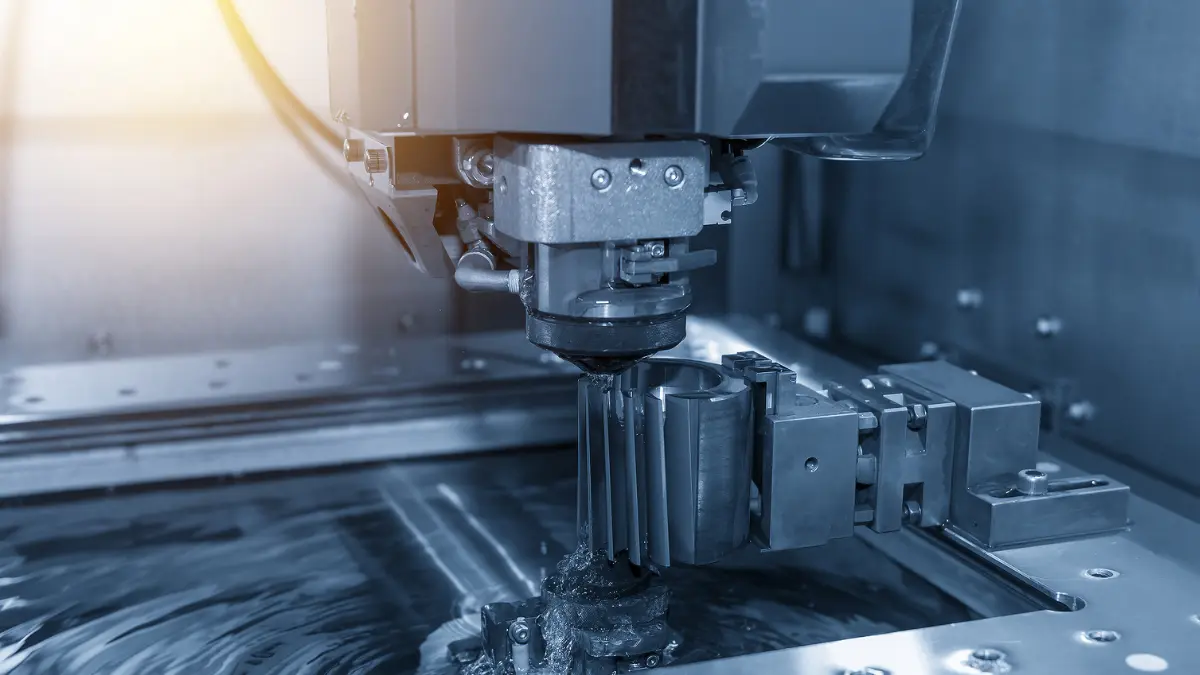
Part Types:
- Precision Molds and Dies:Extrusion dies, injection molds, stamping tools.
- Micro Components:Tiny gears, watch parts, and mechanical linkages.
- Hard Inserts:Hardened wear-resistant parts for cutting and punching.
- Surgical Instruments:Complex geometries in biocompatible metals.
- Sensor Frames:Thin-walled electrical or optical component holders.
By Industry:
- Aerospace:Engine blades, brackets, landing gear components.
- Medical:Orthopedic implants, endoscopic tools, prosthetic parts.
- Electronics:Semiconductor lead frames, connector slots.
- Automotive:High-performance gears, transmission parts.
- Tool & Die:Exact cutting instruments, punch and die sets.
WEDM’s role in these industries continues to grow, especially as product complexity and demand for customization increases.
Best Practices for Optimizing Performance
To get the most out of this cutting method, it’s important to use best practices in design, setup, and execution.
Pro Tips for Engineers and Machinists:
- Design for Wire EDM:Avoid sharp corners that could concentrate current; maintain enough clearance for flushing fluid.
- Material Selection:Choose alloys known to respond well to spark erosion—minimize burrs and distortion.
- Surface Finish Tuning:Modify pulse frequency or wire speed depending on desired surface quality.
- Early Prototyping:Validate geometries and tolerances through one-off samples before full production.
- Partner With Experts:Collaborate with precision machining providers who have deep expertise in EDM programming and operation.
Integrating wire EDM into your CNC workflow can help you produce high-quality, customized parts at a lower cost. This method also reduces lead times.
Conclusion: WEDM as a Game-Changer in Custom Part Manufacturing
Wire-cut EDM continues to be a key enabler in the precision manufacturing world. This method helps solve problems that regular CNC machining cannot.
You remove mechanical stresses to achieve this. This allows for precise tolerances and design flexibility for complex shapes. You can use WEDM alone or with other CNC methods.
These methods include milling, turning, and grinding. WEDM enables quicker, improved, and more adaptable custom part production. This process helps innovation and performance in important areas like aerospace, medical implants, microelectronics, and tool-making.
Regardless of your occupation, this cutting technique can assist you. Useful for product designers, manufacturing engineers, and procurement managers. It can improve your workflow, lower costs, and raise product quality.

